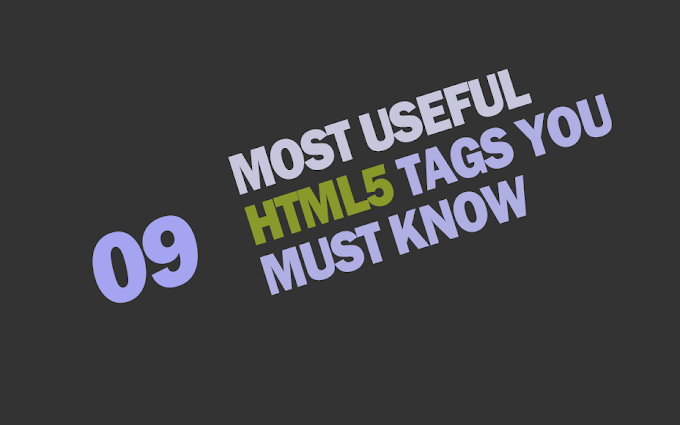HTML (HyperText Markup Language) is the standard markup language for creating web pages and applications. It is the foundation of the modern web and is used by web developers around the world to build websites and web-based applications. While it may seem like a basic and outdated technology to some, HTML is actually capable of some pretty cool and innovative things.
In this blog post, we will take a look at six surprising capabilities of HTML that may surprise you.
- Custom data attributes: HTML5 introduced the ability to add custom data attributes to HTML elements. These attributes, which begin with "data-" can be used to store any arbitrary data that is related to the element. This is useful for storing data that is used by JavaScript or other client-side scripts, without cluttering up the HTML with unnecessary content.
For example, let's say you have an HTML element that represents a product on an e-commerce website. You can use a custom data attribute to store the product's ID, price, and other relevant information, like this:
Then, when a user clicks on the list item, you can use JavaScript to retrieve the product ID from the data attribute:
Custom data attributes are a convenient and lightweight way to store data that is used by client-side scripts, and they can be a useful tool in your web development toolkit.
- Semantic elements: In addition to providing a structure for web pages, HTML also has a number of semantic elements that help to give meaning to the content on the page. For example, the <header> element indicates the beginning of a header section, while the <footer> element indicates the beginning of a footer section. Using these semantic elements can make your HTML more meaningful and easier to understand.
For example, consider the following HTML code:
- Geolocation: HTML5 introduced the geolocation API, which allows web pages to access the user's geographical location. This can be used to create location-aware applications, such as maps or weather apps.
- Drag and drop: HTML5 also introduced the drag and drop API, which allows users to drag and drop elements within a web page or between web pages. This can be used to create interactive and user-friendly interfaces. For example, a task management app could use the drag and drop API to allow users to rearrange their tasks by dragging and dropping them in the order that they want. This can make the app more intuitive and easier to use.
- Web workers: Web workers are a way to run scripts in the background, without affecting the performance of the web page. This is useful for tasks that may take a long time to complete, such as data processing or API calls. For example, a web application that processes a large amount of data could use web workers to run the processing tasks in the background, while the user is still able to interact with the application. This can improve the overall performance and user experience of the app.
- Server-sent events: Server-sent events allow a server to send data to a web page in real-time. This can be used to create real-time applications, such as chat apps or social media feeds. For example, a chat app could use server-sent events to update the chat window in real-time as new messages are received. This can provide a more seamless and immersive experience for the user.








![[Cupons] Paid udemy courses for free](https://blogger.googleusercontent.com/img/b/R29vZ2xl/AVvXsEgYa-f_8UEE95d9stpdRzq6_DUq19avn09M2CVWIuQGI_PwaZBMcNhuHmPZQsw81GMeWwUY2Q-Cr66RoAmMq1f_pok6pdv-W86qc9_wWSxqXEq_RHYyRY0Ldly_yi2DSfyed4Cxiks6Nbzp/w680/Paid+udemy+courses+for+free.png)






0 Comments
If you have any question please ask?